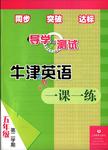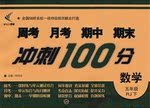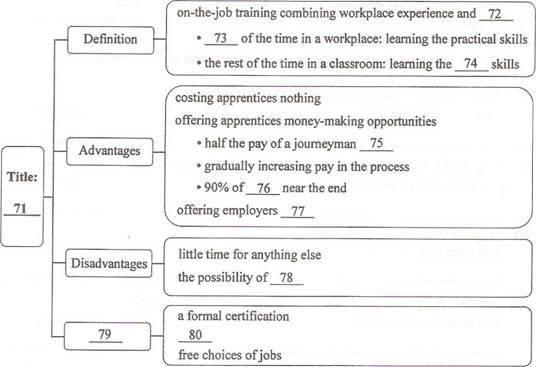题目内容
Section A
Directions: In Section A. you will hear ten short conversations between two speakers. At the end of each conversation, a question will be asked about what was said. The conversations and the questions will be spoken only once. After you hear a conversation and the question about it, read the four possible answers on your paper, and decide which one is the best answer to (he question you have heard.
1.A. This afternoon. B. Tomorrow. C. Next week. D. Next month.
2.A. She doesn't play tennis well. B. She likes other sports as well.
C. She is an enthusiastic tennis player. D. She is a professional athlete.
3.A. At a paint store. B. At an oil market
C. At a science museum. D. At a gallery.
4.A.Work in the yard. B. Buy some wood.
C. Go to the bookstore. D. Take a walk.
5.A. A taxi driver. B. A passenger.
C. A car cleaner. D. A mechanic.
6.A. Call a repairman. B. Get out the paper stuck
C. Turn to her colleague for help. D. Restart the machine
7.A. There are not enough gardens. B. Parking areas are full before 10:00.
C. Parking areas are closed after 10:00. D. All classes begin at 10:00.
8.A. The presentation will begin at noon. B. She'll present her work to the man.
C. She'd like to invite the man for lunch. D. She suggests working on the presentation at 12:00.
9.A. The dormitory hours. B. The problem with the rules.
C. The door number of the dormitory. D. The time to open the dormitory.
10.A. The chairs didn't need to be painted. B. He doesn't like the color of the chairs.
C. The park could have avoided the problem. D. The woman should have been more careful.
Section B
Directions: In Section B. you will hear two short passages, and you will be asked three questions on each of the passages. The passages will be read twice, but the questions will be spoken only once. When you hear a question, read the four possible answers on your paper and decide which one would be the best answer to the question you have heard.
Questions II through 13 are based on the following passage
11.A. Worried. B. Surprised. C. Satisfied. D. Uninterested.
12.A. It spoiled Juana's reputation. B. It copied her ideas without permission.
C. It bought Juana's dishwashers. D. It wanted to share the dishwasher market.
13.A. A successful business case. B. Juana's waterless laundry.
C. A case against a global company. D. The worldwide dishwasher market.
Questions 14 through 16 are based on the following instructions.
14.A. footprints. B. Food. C. Living insects. D. Orange seeds.
15.A. Don't touch animals under any circumstances.
B. Don't take away any natural objects from the park.
C. Don't leave litter in the park or throw any off the boat.
D. Don't transport animals from one island to another.
16.A. To protect the guide's interest. B. To improve the unique environment.
C. To ensure a trouble-free visit. D. To get rid of illegal behaviours.
Section C
Directions: In Section C, you will bear two longer conversations. The conversations will be read twice. After you hear each conversation, you are required to fill in the numbered blanks with the information you have heard. Write your answers on your answer sheet.
Blanks 17 through 20 are based on the following conversation.
|
Customs Form |
|
Destination: __17.__ |
|
Contents in detail: __18.__ |
|
Value: $__19.__ |
|
Type of mail: __20.__ |
|
Weight: 1.5 pounds |
|
Your item must not contain any dangerous articles prohibited by postal regulations. |
Complete the form. Write ONE WORD for each answer.
Blanks 21 through 24 arc based on the following conversation.
|
What is the man's oral report on? |
An 21.woman. |
|
What kind of people are called refugees? |
Those who 22.to escape war or other problems. |
|
How many refugees are there worldwide? |
About 23.. |
|
What does the man think of Ms. Ogata? |
She is successful both in __24.__. |
Complete the form. Write NO MORE THAN THREE WORDS for each answer.
1.C
2.C
3.D
4.A
5.A
6.B
7.B
8.D
9.A
10.C
11.D
12.B
13.A
14.A
15.B
16.B
17.India
18.Sweater
19.50
20.Ordinary
21.outstanding
22.leave their countries
23.17 million
24.career and family

 导学与测试系列答案
导学与测试系列答案 新非凡教辅冲刺100分系列答案
新非凡教辅冲刺100分系列答案